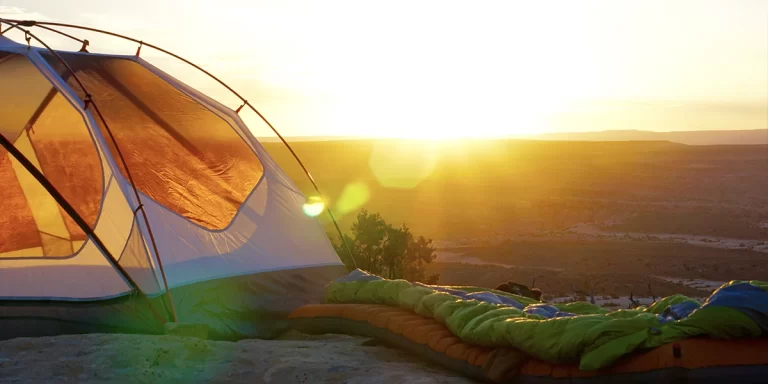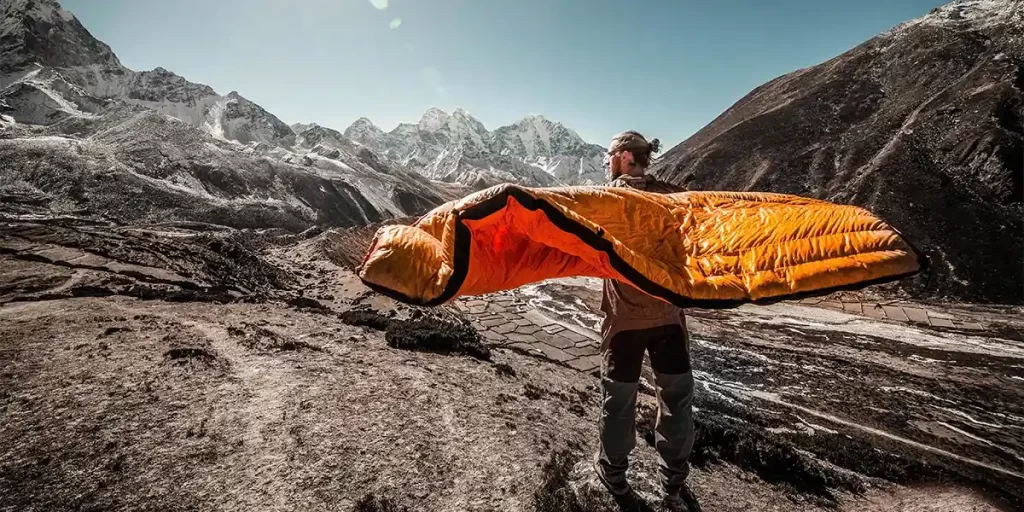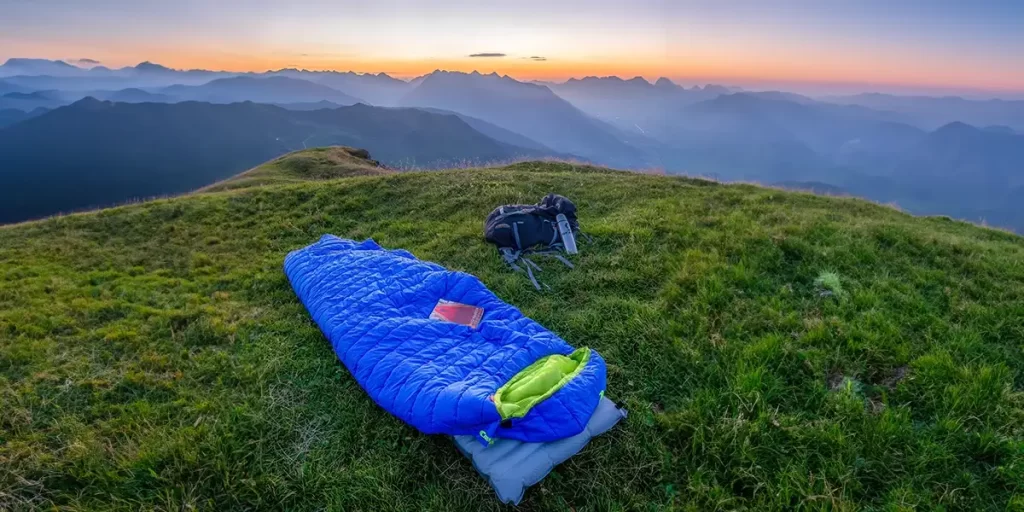

Imagine camping under the stars, surrounded by nature’s beauty, but you’re shivering in your sleeping bag or feeling confined in your quilt. It’s a scenario no camper wants to face.
In this post, we’ll answer a common question among thru-hikers and backpackers: ‘Quilt vs Sleeping Bag: Which to Choose?‘ We’ll explain these insulating options and their significance in detail.
Let’s begin.
You might be wondering, ‘What’s the difference between quilts and sleeping bags?’ Both are designed to keep you warm at night and may appear relatively similar to the untrained eye.
The primary difference between quilts and sleeping bags lies in their overall design:

Quilts, beloved by ultralight enthusiasts, resemble oversized blankets tailored for outdoor enthusiasts seeking warmth and comfort without the extra bulk.
Pros of Quilts:
Cons of Quilts:
Some popular lightweight or ultralight quilt options include:
| Make / Model | Weight (g) | Seasonlity |
|---|---|---|
| Enlightened Equipment Revelation APEX Quilt | 1lb 2.8oz (532) | 3-Season |
| ZenBivy Light Quilt 40° Synthetic | 1lb 10.8oz (760) | 3-Season |
| Sea to Summit Ember Ultralight Down Quilt 25F | 1lb 9.5oz (725) | 4-Season |
| Enlightened Equipment Revelation Sleeping Quilt | 1lb 4.8oz (591) | 4-Season |

Sleeping bags, like portable cocoons, shield against the elements and have evolved to cater to diverse camper preferences in the last decade.
Pros of Sleeping Bags:
Cons of Sleeping Bags:
Some popular lightweight or ultralight sleeping bag options include:
| Make / Model | Weight (g) | Seasonlity |
|---|---|---|
| Thermarest Hyperion 32F/0C Sleeping Bag | 1lb 0.2oz (462) | 3-Season |
| Sierra Designs Get Down 35° | 1lb 12oz (770) | 3-Season |
| Sea to Summit Spark Ultralight Sleeping Bag | 1lb 10oz (745) | 4-Season |
| Sierra Designs Get Down 20° | 2lb (930) | 4-Season |
Here’s a quick comparison table summarizing the main differences between these two options covered in the last sections:
| Feature | Quilts | Sleeping Bags |
|---|---|---|
| Weight | Lightweight, around 10% lighter than similar sleeping bags | Tend to be slightly heavier than quilts |
| Packed Size | More compact, take up less space in backpack | Bulkier than quilts |
| Temperature Regulation | Excellent temperature control for easy adjustment | Trap heat well but can lead to overheating on warmer nights |
| Freedom of Movement | Allow natural sleeping positions and easy movement | Restrictive design can limit movement and sleeping positions |
| Draft Protection | May allow cold drafts, especially in sub-zero temps | Cocoon design protects entire body from drafts |
| Head Coverage | Lack hoods, require beanie or clothing layer for head warmth | Usually have insulated hoods to warm head and face |
| Ease of Use | Require some setup to secure quilt properly | Simple to use, just climb in and zip up |
| Customization | Many brands offer custom options for fabric, fill, size | Standard options, less customization |
So, which option should you choose for your next backpacking trip?
You should choose a sleeping bag if…
You should choose a quilt if…
In summary, quilts offer versatility, breathability, and freedom of movement, while sleeping bags provide comprehensive insulation and better protection against drafts, particularly in colder conditions.
The ideal choice depends on factors such as climate, terrain, activity level during sleep, weight considerations, and personal preferences.
For most campers, a sleeping bag strikes a good balance of comfort, convenience, and warmth. However, dedicated ultralight backpackers aiming for minimal weight might find a well-designed quilt a good alternative.
We hope that this post made your thought process a bit clearer, and you now have a better understanding of what you should go for. Happy camping.
Interested in an ultralight quilt or sleeping bag? Check out our TOP 5 guides for the lightest options on the planet.
The main drawbacks of using a quilt over a traditional sleeping bag are less insulation and draft blocking, more required user effort to secure it properly, potential cold spots from gaps in quilting coverage, the learning curve to use it effectively, lack of an insulated hood, and the need to pair it with a sleeping pad. Quilts have an open design that increases ventilation but reduces warmth compared to a sleeping bag’s encapsulating structure. You also have to be diligent about wrapping and attaching the quilt around your sleeping pad to prevent it from shifting as you sleep. For some conditions and campers, quilts can provide a lighter and less restrictive option, but they require more finesse to use properly compared to simply zipping into a sleeping bag.
The choice between a quilt and a sleeping bag depends on your specific needs and preferences. Quilts are like oversized blankets, offering lightweight versatility and freedom of movement, making them ideal for ultralight backpackers. However, they may not provide the same level of warmth in extreme cold conditions.
On the other hand, sleeping bags are like cozy fortresses against the elements, providing reliable warmth and protection, but they can be bulkier and heavier. Consider your unique camping conditions, mobility preferences, and comfort requirements when deciding between the two.
Quilts are generally lighter than sleeping bags, making them a preferred choice for ultralight backpackers and those looking to shed pack weight. On average, quilts can be around 10% lighter than equivalent sleeping bags, depending on factors like size, materials, and temperature ratings.
However, the exact weight difference varies between brands and models, so it’s essential to compare specific products to determine the precise weight savings for your needs.